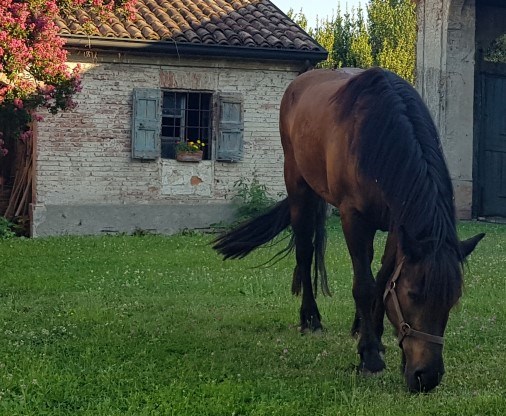Contact
Susanne Eriksson
Researcher at the Department of Animal Breeding and Genetics; Department of Animal Breeding and Genetics, Applied Genetics
Telephone: +4618672007
E-mail: susanne.eriksson@slu.se

Horses are nowadays mainly used for sport and leisure activities, and several local breeds, traditionally used in agriculture, have been exposed to a dramatic loss in population size and genetic diversity. The loss of genetic diversity negatively impacts individual fitness and reduces the potential long-term survivability of a breed. Recent advances in molecular biology and bioinformatics have allowed researchers to explore biodiversity one step further.
This study aimed to evaluate the loss of genetic variability and identify genomic regions under selection pressure in the Bardigiano breed based on GGP Equine70k SNP data.
The effective population size based on Linkage Disequilibrium (Ne) was equal to 39 horses, and it showed a decline over time. The average inbreeding based on runs of homozygosity (ROH) was equal to 0.17 (SD = 0.03). The majority of the ROH were relatively short (91% were ≤2 Mbp long), highlighting the occurrence of older inbreeding, rather than a more recent occurrence. A total of eight ROH islands, shared among more than 70% of the Bardigiano horses, were found. Four of them mapped to known quantitative trait loci related to morphological traits (e.g., body size and coat color) and disease susceptibility.
This study provided the first genome-wide scan of genetic diversity and selection signatures in an Italian native horse breed.
https://doi.org/10.3390/ani10061005
Ablondi, M.; Dadousis, C.; Vasini, M.; Eriksson, S.; Mikko, S.; Sabbioni, A. Genetic Diversity and Signatures of Selection in a Native Italian Horse Breed Based on SNP Data. Animals 2020, 10, 1005.
Susanne Eriksson
Researcher at the Department of Animal Breeding and Genetics; Department of Animal Breeding and Genetics, Applied Genetics
Telephone: +4618672007
E-mail: susanne.eriksson@slu.se